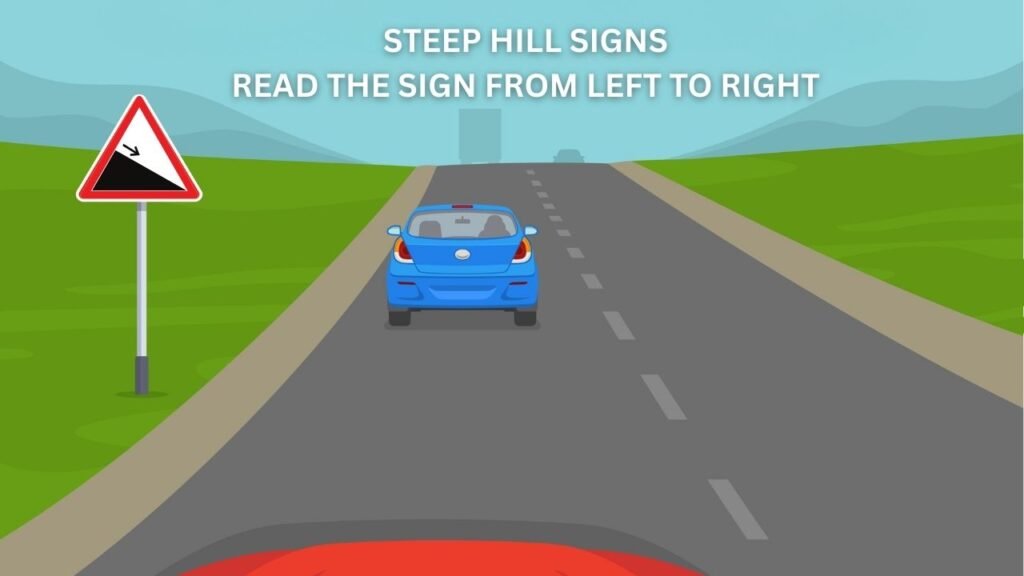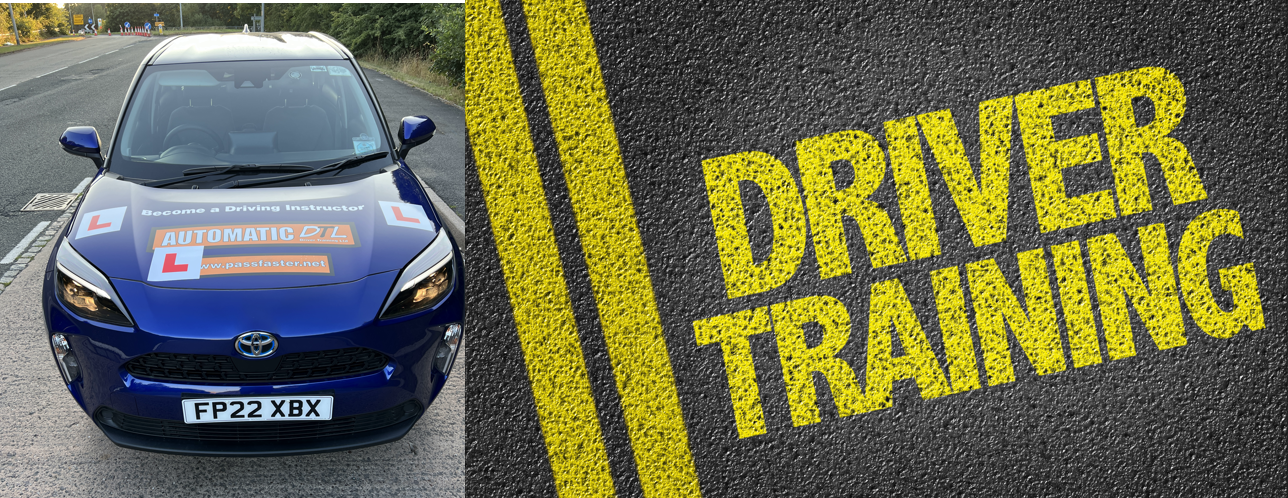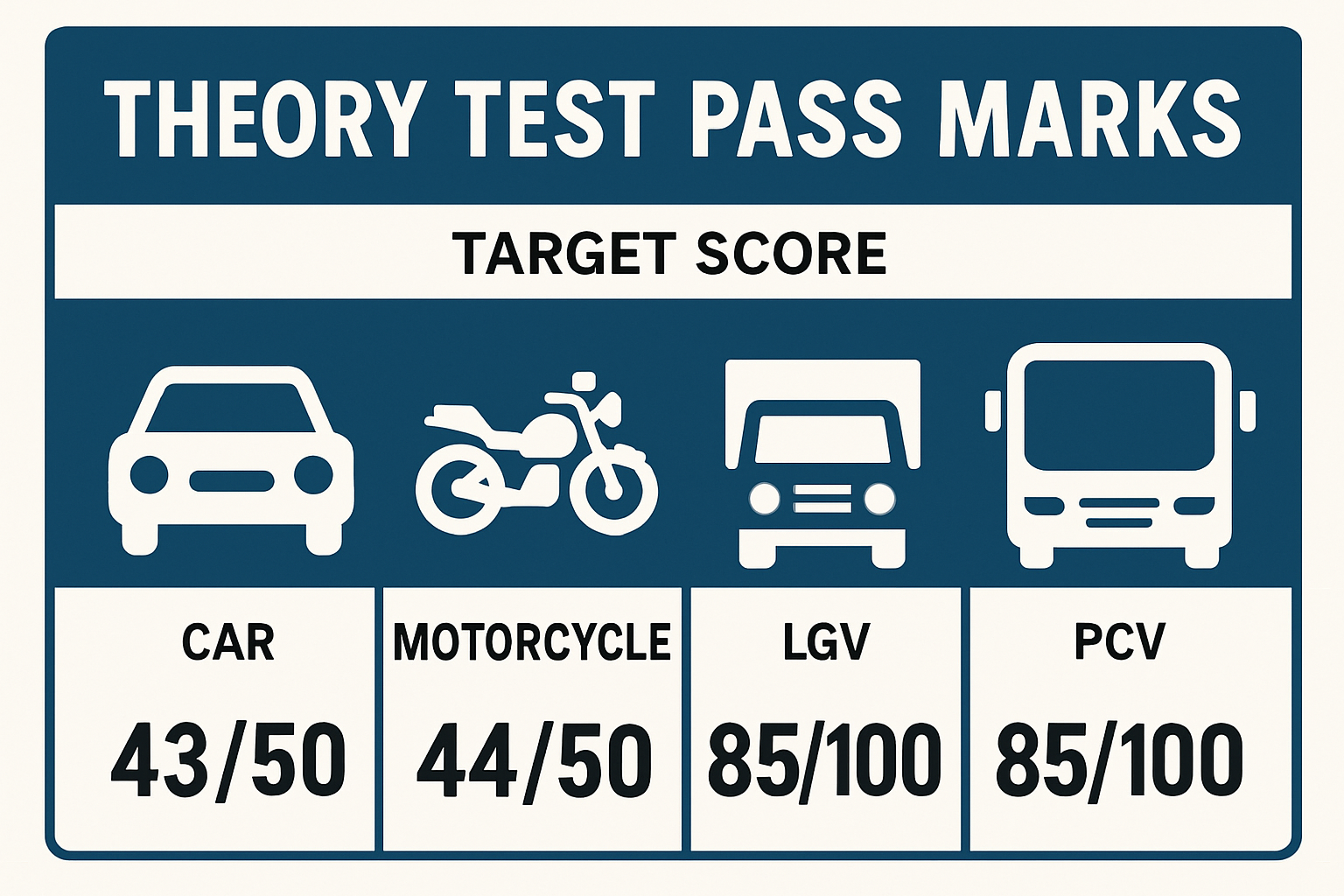Steep Hill Signs: Why “Upwards” and “Downwards” Matter on the Road – and in Your Theory Test

There’s a certain charm about Britain’s roads: rolling countryside, winding lanes, and the occasional hill that seems to climb into the clouds or drop into the abyss. To keep us prepared, the Highway Code provides clear warning signs for steep hill upwards and steep hill downwards.
At first glance, they might look similar – two red triangles with a slope and a percentage – but the direction of the slope makes all the difference. And not just for your driving, but for your theory test knowledge too.
The Steep Hill Downwards Sign

- What it looks like: A triangular warning sign with the slope falling from left to right, usually showing a gradient such as 10% (1 in 10).
- What it means: You’re approaching a steep descent.
- Driving action: Slow down in good time, select a low gear, and use engine braking rather than relying only on your footbrake. This prevents your brakes from overheating on long descents.
For the theory test: You could be asked what this sign means, how to control your vehicle downhill, or even how a gradient is shown (percentages or ratios, e.g., 1 in 10).
The Steep Hill Upwards Sign

- What it looks like: The slope is reversed – rising from left to right – again with a gradient such as 20% (1 in 5).
- What it means: A steep climb lies ahead.
- Driving action: Choose a lower gear before you reach the hill. This keeps your engine pulling smoothly without stalling or straining, especially in manual cars.
For the theory test: Questions might cover recognising the sign, or why selecting the right gear before the climb helps avoid problems like stalling or rolling backwards.

Why the Difference Matters
It might sound obvious, but mistaking “uphill” for “downhill” could mean preparing your car completely the wrong way:
- Expecting to climb when you actually need to brake.
- Expecting to brake when you really need to build power.
On the road, that’s a recipe for mechanical strain – or worse, a loss of control. In the theory test, it could mean missing a question that’s considered basic highway knowledge.
Traditional Driving Wisdom
In the past, when vehicles didn’t have the forgiving power of today’s engines or the luxury of automatic hill assist, these signs were crucial. Drivers learned to anticipate, prepare, and respect the hill before them. The principle remains the same:
- Downhill – let the car’s engine help hold you back.
- Uphill – keep momentum and power under control.
It’s not just safe driving, it’s skilful driving – the sort that examiners (and passengers!) notice.
How It Comes Up in the Theory Test
- Sign recognition – You’ll be asked to identify the steep hill upwards or steep hill downwards sign from a multiple-choice image.
- Vehicle control – You may face questions on how to approach steep gradients, such as when to change gear or how to use your brakes effectively.
- Hazard perception – Spotting a steep gradient sign in the clips is your cue to anticipate how your vehicle and other road users will react.
Failing to distinguish between the two signs could cost you marks, even before you reach the practical test.
Steep Hill Uphill vs Steep Hill Downhill
The steep hill signs aren’t just there to decorate the roadside – they’re advance warnings that can make or break your control of the car. For learners, recognising the difference between upwards and downwards is both a theory test essential and a real-world lifesaver.
How does understanding steep hill signs benefit drivers and new learners?
Understanding these signs helps drivers anticipate the correct driving technique for each situation, reducing risks of mechanical issues or accidents. For new learners, recognizing these signs is also a vital part of the theory test, and mastering them promotes safe, skillful driving.
What should I do when approaching a steep hill upwards sign?
Approaching a steep uphill sign, you should choose a lower gear before reaching the hill to keep your engine pulling smoothly without stalling or straining, especially important when driving a manual vehicle. This ensures safe and effective vehicle control while climbing.
What actions should I take when I see a steep hill downwards sign?
When you see a steep downhill sign, you should slow down in good time, select a low gear, and use engine braking rather than relying solely on your foot brake. This approach helps prevent your brakes from overheating on long descents and maintains vehicle control.
Why is it important to recognize the difference between uphill and downhill steep signs on the road?
Recognizing the difference is crucial because confusing the two signs can lead to improper vehicle preparation, such as expecting to climb when you should be braking, or expecting to brake when you need to build power. This could result in mechanical strain or loss of control, and in the theory test, it helps demonstrate your knowledge of highway safety.
What is the difference between the steep hill upwards and steep hill downwards signs?
The steep hill upwards sign indicates a steep climb ahead and features a rising slope from left to right, usually with a gradient like 20%, while the steep hill downwards sign indicates a steep descent, with a falling slope from left to right, typically with a gradient like 10%. Understanding this difference is important for safe driving and is frequently tested in the theory exam.
Think of them as a quiet reminder that driving isn’t about rushing from A to B. It’s about reading the road, preparing properly, and carrying on the tradition of smooth, skilful British motoring.
Contents
- 1 Steep Hill Signs: Why “Upwards” and “Downwards” Matter on the Road – and in Your Theory Test
- 1.1 The Steep Hill Downwards Sign
- 1.2 The Steep Hill Upwards Sign
- 1.3 Why the Difference Matters
- 1.4 Traditional Driving Wisdom
- 1.5 How It Comes Up in the Theory Test
- 1.6 Steep Hill Uphill vs Steep Hill Downhill
- 1.6.1 How does understanding steep hill signs benefit drivers and new learners?
- 1.6.2 What should I do when approaching a steep hill upwards sign?
- 1.6.3 What actions should I take when I see a steep hill downwards sign?
- 1.6.4 Why is it important to recognize the difference between uphill and downhill steep signs on the road?
- 1.6.5 What is the difference between the steep hill upwards and steep hill downwards signs?


